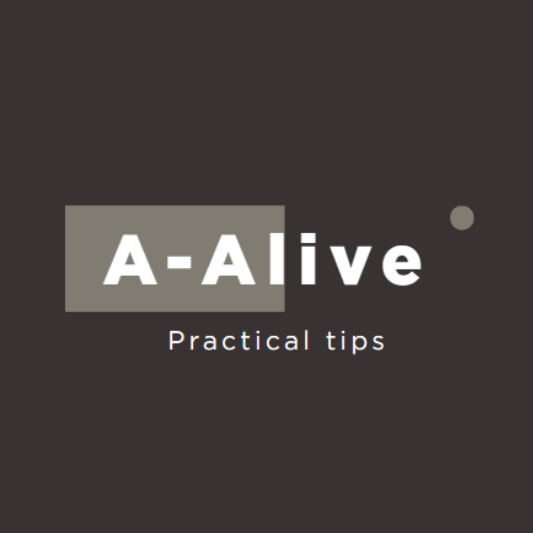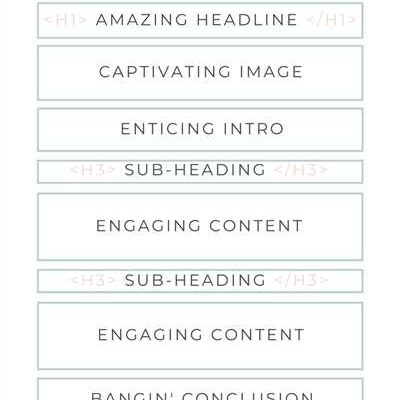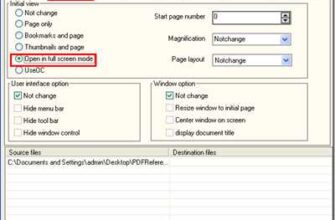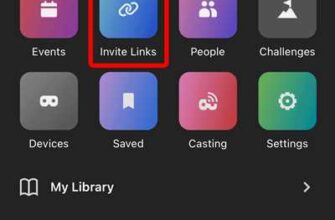
When writing an article for your blog, it is essential to have a clear structure to ensure that your readers can easily follow your content. The first thing your readers will see is the title of your blog post, so make sure it captures their attention and gives them an idea of what they can expect to read about.
Once you have a compelling title, the next step is to create an introduction that hooks the reader and encourages them to continue reading. Your introduction should provide a brief overview of the topic and why it matters. It should also set the tone for the rest of the article and give the reader a clear idea of what they can expect to learn.
After the introduction, it’s time to dive into the main body of your blog post. Break up your content into smaller paragraphs to make it easier to read. Use subheadings to divide different sections or topics within your article. This not only makes your post more scannable for readers but also helps you stay organized when writing.
As you write your blog post, don’t forget to include links to additional sources or related articles. When you provide links, it shows that you’ve done your research and gives your readers a chance to explore a topic further if they want to. It also helps with SEO and can keep users on your site longer as they open the links in new tabs.
Another important aspect of structuring a blog post is formatting. Use formatting options like bold text () or emphasized text () to highlight important points or key takeaways throughout your article. This makes it easier for readers to skim and find the information they need.
Lastly, end your blog post with a clear call to action. What do you want your readers to do next? Whether it’s leaving a comment, sharing the post on social media, or taking further action related to the topic, make sure to include a compelling call to action to guide your readers.
Remember, the structure of your blog post matters. A well-structured article will not only make it easier for your readers to follow but also help you as a writer to stay organized and make sure you’re covering all the necessary points. Taking the time to set up a proper structure before you start writing will make the writing process smoother and result in a more engaging and informative blog post.
Blog post structure: How to set up an easy-to-read text
When it comes to creating blog posts, the structure of your content matters. If you want to keep your readers engaged and ensure they find your article easy to read, you need to take a few key steps when setting up your text.
Step 1: Set up a good blog post structure.
Before you start writing, it’s important to have a clear idea of the structure you want to follow. This will make it easier for both you as the writer and your readers to navigate through the content.
Step 2: Include subheadings.
Subheadings not only break up your text into smaller sections, but they also help guide your readers through the different parts of your blog post. This makes it easier for them to find the specific information they are looking for.
Step 3: Make use of bullet points.
Using bullet points or numbered lists can help organize your ideas and make them more digestible for your readers. Bullet points can also make your content look less overwhelming and encourage users to read through the entire article.
Step 4: Link back to additional sources.
Providing links to additional sources or related articles can add value to your blog post. It shows that you have done your research and allows readers to explore the topic further if they want to.
Step 5: Call readers to action.
Don’t forget to include a call-to-action in your blog post. Whether it’s asking readers to leave a comment, share the post on social media, or sign up for your newsletter, a call-to-action can encourage engagement from your audience.
Step 6: Don’t publish without proofreading.
Before hitting that publish button, make sure to proofread your blog post for any typos or grammatical errors. Nothing can turn off readers more than a poorly written article.
In conclusion, setting up an easy-to-read text in your blog posts is crucial for both your readers and your workflow as a writer. By following these steps, you can ensure that your content is well-structured, engaging, and provides value to your audience.
Read reviews from real users
When writing a blog post, it’s important to provide your readers with additional sources of information that support your topic. One way to do this is by including reviews from real users. These reviews can serve as valuable testimonials and give your readers a glimpse into the experiences of others.
To make it easy for your readers to access these reviews, you can create a linking action within your text. For example, you can mention that readers can click here to read reviews from real users.
In order to include these reviews in your blog post, you’ll first need to gather them from reliable sources. Look for well-known websites or platforms where users can share their feedback on a particular product or service. Make sure the reviews you choose are genuine and provide a good representation of the overall sentiment surrounding your topic.
Once you’ve gathered the reviews, you can format them in an easy-to-read and visually appealing way. One way to do this is by using a table to organize the reviews. Set up the table with columns for the reviewer’s name, the date of the review, and the content of the review. This will make it easier for readers to scan through the reviews and find the information that matters most to them.
Don’t forget to include a subheading before the table, such as “Real User Reviews” or “What People Are Saying.” This will make it clear to your readers that they are about to read reviews from real users and not just the opinions of the writer.
Another good practice is to link back to the sources of the reviews. This not only gives credit to the original authors but also allows readers to open the source in a new tab if they want to read more reviews or gather additional information.
By including reviews from real users in your blog post, you’re providing your readers with valuable insights and perspectives. This can make your post more trustworthy and credible. It also shows that you’ve done your research and are well-informed on the topic.
As a writer, it’s important to remember that the structure and formatting of your blog posts can make a big difference in how easy they are to read. Including subheadings, formatting the text well, and using bullet points or numbered lists are all good ways to break up the content and make it more visually appealing.
So next time you’re writing a blog post, don’t forget to include reviews from real users. It will not only make your post more informative and credible but also make it easier for your readers to follow along and take action.
Readers will appreciate the additional insights and perspectives that real user reviews provide.
Good for the writer too
Creating a well-structured blog post not only benefits your readers, but it also helps you as a writer. When you follow a clear structure, you will have a guide to help you organize your thoughts and ideas. This will make the writing process easier and ensure that you don’t forget any important points.
One of the key aspects of a good blog post structure is formatting. By using subheadings, bullet points, and numbered lists, you can break up your text into easily readable sections. This is important because readers often skim through articles before deciding whether to read them fully. By making your content easy-to-read and scannable, you’ll increase the chances that users will open and read your post.
Another benefit of structuring your blog posts is that it makes it easier to include linking and call-to-action elements. When you have a clear structure, you can create relevant links to other posts or additional sources that support your topic. This not only provides valuable information to your readers, but it also encourages them to explore your blog further.
Additionally, structuring your blog posts can help in your post-publish workflow. When you have a set structure, it’s easier to review and edit your article. You can go back to the main points you wanted to cover and make sure you’ve included everything you need. This saves time and ensures that your final piece is polished and well-organized.
So, don’t underestimate the importance of a good blog post structure. It matters for your readers, but it also matters for you as a writer. By creating a clear and easy-to-follow structure, you’ll make it easier for your readers to consume your content, and you’ll create a more enjoyable writing experience for yourself.
Why Formatting Your Blog Matters
When it comes to writing a blog post, the content is obviously important. But don’t forget about the formatting! The way you structure your blog post can make a real difference in how readers perceive and interact with your content.
First and foremost, formatting your blog posts in a well-organized and easy-to-read manner will make it easier for readers to navigate through your article. By using subheadings, bullet points, and numbered lists, you can break up the text into smaller, digestible chunks. This not only helps readers find and understand the main points of your post, but it also makes it easier for them to skim through the content if they’re short on time.
Additionally, proper formatting can make your blog post more visually appealing. By using paragraphs to separate ideas and leaving enough white space between them, you create a clean and open layout. This not only makes it more pleasant for readers to look at, but it also helps them stay focused on the content. If your blog post looks cluttered and disorganized, readers may quickly lose interest and click away.
Formatting is also important for SEO purposes. Search engines like Google rely on clear structure and well-optimized content to understand the topic and relevance of your blog post. By using headings, subheadings, and appropriate keyword placement, you can help search engines understand the main ideas and topics covered in your post. This can increase your chances of ranking higher in search engine results, bringing more organic traffic to your blog.
Another reason why formatting your blog matters is that it can encourage readers to take action. By using bold or italic formatting, you can draw attention to important points or key takeaways. You can also create clickable links within your blog post, linking to additional resources or related articles. This not only provides value to your readers but also keeps them engaged and encourages them to explore more of your content.
Finally, formatting your blog posts well is essential for your workflow as a writer. When you create a set structure for your blog posts, it becomes easier to organize your thoughts and ideas. It can help you stay focused and ensure that you cover all the necessary points in an organized manner. Additionally, a well-formatted post makes the editing and proofreading process much easier, as you can easily spot and fix any errors or inconsistencies.
In conclusion, formatting your blog posts is not something you should overlook. It has a significant impact on how readers perceive and interact with your content. By structuring your blog posts effectively, you can make them easier to read, navigate, and understand. So, next time you publish a blog post, don’t forget to pay attention to the formatting – it will make a real difference!
Don’t forget to include a call to action – possibly linking to additional content on the topic
When creating a blog post, it’s important to think about the actions you want your readers to take after reading your content. One way to encourage engagement is by including a call to action (CTA) at the end of your post. This can be as simple as asking readers to leave a comment, share the post on social media, or subscribe to your newsletter.
Another effective CTA is to link to additional content on the same topic. This can help readers dive deeper into the subject matter and keep them on your website for longer. It also shows that you’ve done your research and are providing a comprehensive resource for your audience.
The key to a good call to action is to make it clear, compelling, and easy to follow. Use action verbs to prompt readers to take the desired action, and ensure that the link or button you provide is highly visible and easy to click.
When it comes to linking to additional content, it’s important to have a well-structured blog post. Use subheadings, bullet points, or numbered lists to break up your text and make it easy-to-read. This will make it easier for readers to skim through the post and find the information they’re looking for.
Formatting matters too. Make sure your post is free from typos and grammatical errors, as these can distract and turn off readers. Use bold or italics to emphasize important points, and include relevant images or screenshots to make your content more visually appealing.
Don’t forget that your call to action should also be relevant to the topic of your post. If you’re writing a post about “How to structure blog posts,” a call to action to “Read reviews of the best blogging tools” might not be as effective as a call to action to “Learn more about the benefits of using subheadings in your blog post.”
Including a call to action and linking to additional content can help you engage your readers, provide them with valuable resources, and keep them coming back for more. So, don’t forget to include a strong CTA in your blog posts.
Sources

When writing a blog post, it’s important to include sources for any information or ideas that you mention. This not only helps to establish your credibility as a writer, but also allows readers to follow up on the topic and find additional information if they’re interested.
One good way to include sources is by linking to other blog posts or articles that you found useful or informative. This can be done by inserting a hyperlink into your text, so that readers can click on the link and be taken directly to the source.
Another option is to include a list of sources at the end of your blog post, similar to how you would in a research paper. This can be in the form of a bulleted or numbered list, and should include information such as the author, title, publication date, and URL.
Don’t forget that sources can also include real-life examples or personal experiences. If you’re writing about a topic that you have firsthand knowledge or expertise in, don’t be afraid to draw from your own experiences and share them with your readers.
One thing to keep in mind when citing sources is that you should always make sure the information is reliable. Be cautious of linking to sources that may not be trustworthy or reputable, as this can negatively impact your own credibility as a writer.
Additionally, including sources can also help with the structure of your blog post. By linking to other sources, you can provide additional context or information on a specific subheading or topic, making your post easier to read and understand. This can also help break up the text and make it more visually appealing.
Overall, including sources in your blog posts is a good practice to follow. It shows your readers that you’ve done your research and that you’re providing valuable and accurate information. It also helps to improve your own writing and workflow, as you’ll have a clear set of sources to refer back to when writing future posts.










